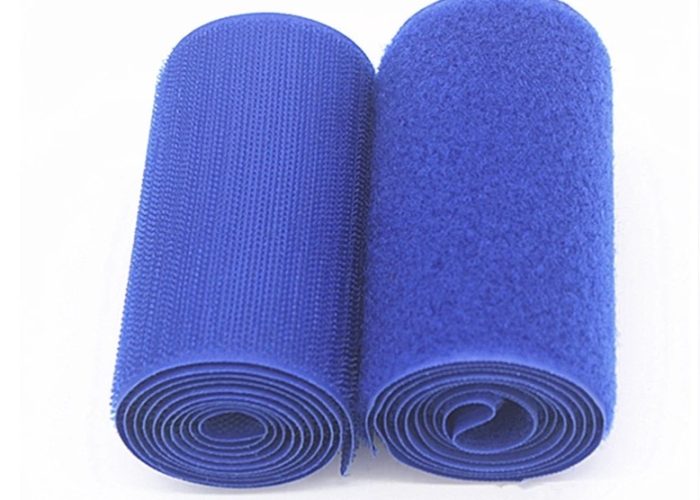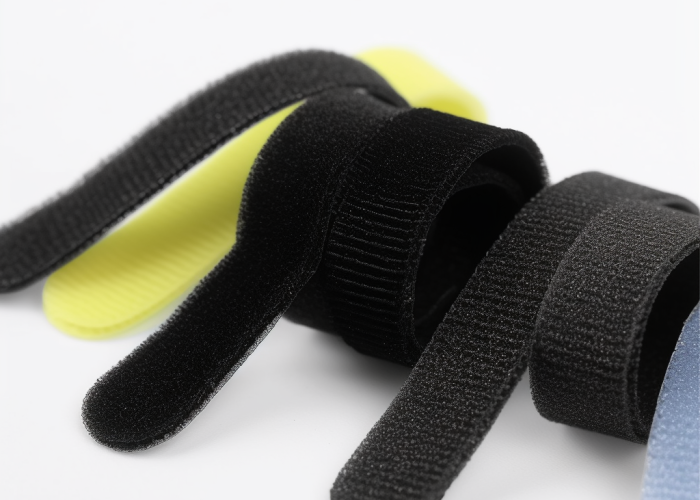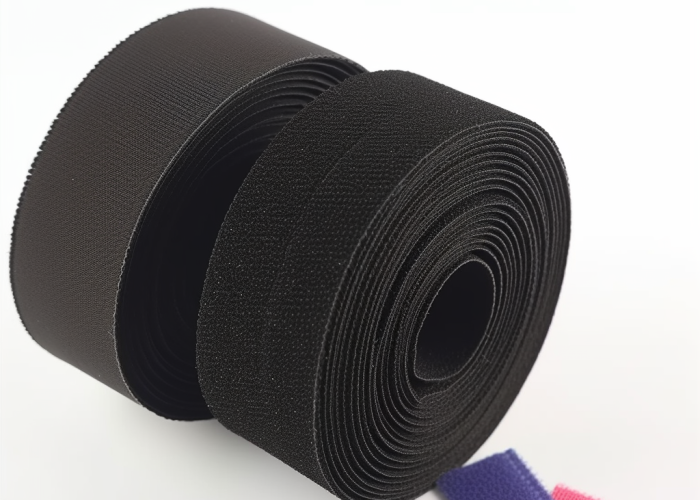Selecting the appropriate fastening solution for technical products requires understanding specialized components like low pile straps. Engineers and product developers must consider durability, user comfort, and application-specific requirements when integrating hook-and-loop fastening systems into their designs.
A low pile strap refers to a type of hook-and-loop (Velcro-style) strap made with a “low pile” loop material that depends on the height and density of the looped fibers on the strap’s surface. This specialized fastening solution features a shorter, denser, and flatter loop surface compared to standard high-pile loop materials, making it more comfortable against the skin and compatible with hook fasteners.
Explore the features of low pile straps, how they compare to high pile, and get expert guidance on choosing the right option for your engineering needs.


Webbing manufacturing expert with 15+ years of experience helping product developers build high-performance straps for industrial, medical, and outdoor use.
Low pile straps feature five key characteristics: soft low-bulk material, hook fastener compatibility, comfort against skin, moderate closure life, and minimal stretch properties. These features distinguish them from standard high-pile loop materials, making them ideal for applications requiring direct skin contact and comfort without sacrificing secure fastening.
Key Features at a Glance:
For body-worn applications where comfort meets functionality, low pile straps offer significant advantages. The reduced profile prevents pressure points while maintaining necessary closure strength. Their engineered hook compatibility ensures reliable fastening despite the shorter loops, while the non-stretch properties maintain precise positioning – critical for medical devices and performance wearables.
These specialized straps balance comfort with functionality, making them the preferred option when standard hook-and-loop systems would prove too bulky or uncomfortable for direct body contact applications.
Feature Comparison: Low Pile vs. High Pile Straps
Feature Low Pile Straps High Pile Straps
Material Profile Shorter, denser loops Taller, less dense loops
Bulk Low profile against body Standard/High profile
Comfort Higher comfort, reduced irritation Potential irritation with extended contact
Best Applications Medical devices, wearables, athletic supports General purpose, industrial uses
Low pile straps differ from high pile straps primarily in their loop height, density, and surface profile. A low pile strap refers to a type of hook-and-loop (Velcro-style) strap made with a “low pile” loop material, which depends on the height and density of the looped fibers on the strap’s surface. This fundamental difference affects everything from comfort to application suitability.
Key Differences at a Glance:
While both strap types serve as hook-and-loop fastening solutions, the specific engineering of low pile straps makes them optimal for body-worn applications where comfort and low profile are prioritized over maximum closure strength or extended lifecycle requirements.
Low pile straps are best suited for medical and orthopedic applications, wearable technology, and athletic/sporting equipment where comfort, low profile, and moderate closure strength are required. These specialized straps excel in applications requiring close contact with the body while providing secure yet comfortable fastening.
Optimal Applications at a Glance:
Each application category benefits from the unique combination of properties that low pile straps offer. In medical settings, patient comfort directly impacts treatment effectiveness, making the reduced bulk and skin-friendly properties of low pile straps particularly valuable. Wearable technology demands fastening solutions that remain unobtrusive while maintaining position security. Athletic applications require fasteners that move with the body without creating pressure points or irritation during dynamic movement.
The common thread across these applications is the need to balance secure closure with user comfort – precisely the engineering challenge that low pile straps were designed to address.

The most commonly used materials for low pile straps include polyester, nylon (polyamide), polypropylene, polyester-blends with padding, and versions with internal scrim reinforcement. These materials are specifically chosen to create the optimal combination of comfort, durability, and functionality for low-profile hook-and-loop applications.
Common Materials at a Glance:
Material selection significantly impacts performance characteristics, with each option offering specific advantages for particular applications. Engineers should consider environmental exposure, required longevity, and specific comfort needs when selecting the appropriate material for their low pile strap application.
For medical and wearable applications, materials can be supplied with biocompatibility certification or OEKO-TEX® Standard 100 certification, ensuring they meet stringent requirements for patient safety and skin contact applications. These certifications are particularly important for medical device manufacturers who must maintain compliance with regulatory standards for patient-contacting materials.
typical low pile strap features a five-layered design with a hook-sensitive loop surface, providing a balance of functionality and comfort. This multi-layer construction creates a short-looped fastening surface while maintaining durability and comfort characteristics necessary for direct skin contact applications.
Construction Features at a Glance:
This engineered construction allows low pile straps to maintain their distinctive properties while providing reliable performance throughout their intended lifecycle. The layered approach enables manufacturers to optimize each component for specific performance characteristics, creating customized solutions for different application requirements.
Low pile straps are not suitable for all applications, particularly those requiring high-strength fastening, extreme durability, or heavy-load bearing capability. While they excel in body-contact and comfort-critical scenarios, their specialized design creates inherent limitations for certain use cases.
Application Suitability at a Glance:
The moderate closure strength and defined lifecycle of low pile straps make them ideal for specific applications but potentially inappropriate for others. Engineers should carefully evaluate the performance requirements of their application against the characteristics of low pile straps to determine suitability.
For applications requiring direct body contact, moderate closure cycles, and enhanced comfort, low pile straps typically represent the optimal solution. However, for applications where maximum closure strength or extreme durability takes precedence over comfort and profile, traditional high pile options or alternative fastening methods may be more appropriate.

Low pile straps typically offer moderate durability compared to high pile alternatives, with performance varying based on material composition and construction. The shorter loop structure inherently provides fewer potential engagement points, affecting overall lifecycle performance in repeated use scenarios.
Durability Factors at a Glance:
When evaluating durability requirements, engineers should consider the expected usage pattern of their application. For medical devices with defined treatment periods or consumer products with moderate use expectations, low pile straps provide sufficient durability while maintaining their comfort and low-profile advantages.
For applications requiring thousands of closure cycles or exposure to harsh environmental conditions, specialized high-durability variants or alternative fastening methods may be more appropriate. Understanding this durability profile allows designers to properly specify low pile straps within their intended performance range.
Low pile straps offer engineers and product developers a specialized fastening solution that balances comfort with functionality. Their unique construction provides advantages for medical, wearable, and athletic applications where user comfort and low profile are essential. As a webbing manufacturer, we can develop custom low pile strap solutions with specific materials, constructions, and properties tailored precisely to your product requirements.
Medical device, wearable technology, and athletic equipment industries most commonly use low pile straps. These sectors prioritize the comfort and low-profile characteristics that low pile straps offer while still requiring secure closure for body-contact applications.
Low pile straps are ideal for medical applications because of their soft texture, low profile, and compatibility with skin contact. Their reduced bulk prevents pressure points while still providing secure closure, making them perfect for braces, splints, and orthopedic supports where patient comfort directly impacts treatment compliance.
Typical low pile straps withstand 500-2,000 closure cycles before significant deterioration. This moderate lifespan makes them suitable for medical devices, rehabilitation equipment, and consumer products with defined usage periods rather than indefinite industrial applications requiring 3,000+ cycles.
Medical-grade low pile straps should have ISO 10993 biocompatibility and/or OEKO-TEX® Standard 100 certification. These certifications ensure materials meet stringent requirements for patient-contacting applications, confirming they’re free from harmful substances and safe for direct skin contact.
Applying even pressure across the entire contact area ensures optimal performance for low pile straps. Unlike adhesive systems requiring curing time, hook-and-loop systems provide immediate closure when clean, dry surfaces are pressed together with firm, even pressure to maximize hook-loop engagement.
Polyester offers superior moisture resistance compared to nylon in low pile straps. Nylon absorbs up to 8% of its weight in moisture, while polyester remains dimensionally stable when wet. For applications in humid environments or requiring frequent cleaning, polyester provides more consistent performance.